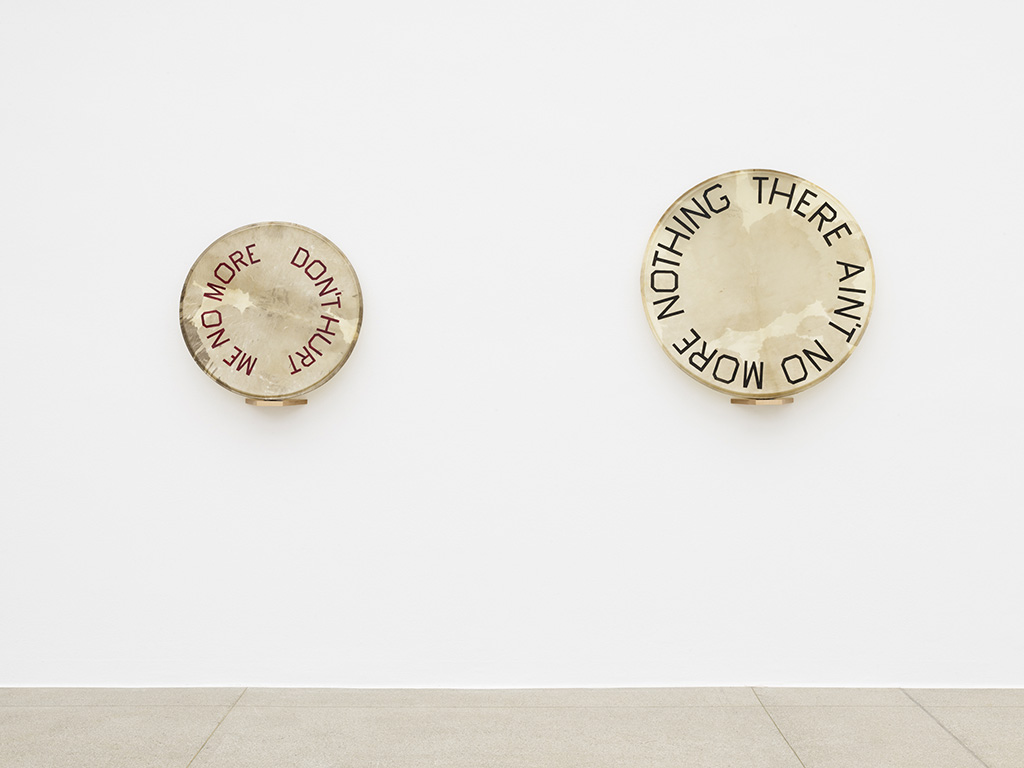ART-PRESENTATION:Ed Ruscha-Double Americanisms
 In more than sixty years, Ed Ruscha has built an oeuvre encompassing conceptual photographs, paintings, drawings, artist’s books, prints, and films that chronicle the development of the American West and of Los Angeles in particular in a singular artistic idiom. Widely acclaimed as a sober-minded and dispassionate witness and historian, outspoken and enigmatic at once, Ruscha is gifted with a keen sense for linguistic humor and the comedy of everyday life.
In more than sixty years, Ed Ruscha has built an oeuvre encompassing conceptual photographs, paintings, drawings, artist’s books, prints, and films that chronicle the development of the American West and of Los Angeles in particular in a singular artistic idiom. Widely acclaimed as a sober-minded and dispassionate witness and historian, outspoken and enigmatic at once, Ruscha is gifted with a keen sense for linguistic humor and the comedy of everyday life.
By Efi Michalarou
Photo: Vienna Secession Archive
The conception of his most recent exhibition “Double Americanisms” reveals him to be not only an alert observer, but also a master of the well-placed allusion and spellbinding and witty storyteller. Language, in the form of texts or single words, entered Ruscha’s work early on; since the 1960s, his paintings have unfolded an increasingly complex interplay between image and text. The exhibition marks the public debut of a new series of linguistic paintings informed by his memories of Oklahoma City, where he spent his teenage years, and the city’s distinctive slang: used parchment drumheads are inscribed with locutions whose shared feature is the use of a double negation. For a conceptual revision of a series of paintings created between 1985 and 2017, Ruscha branched out into digital image editing. His trademark concision and dry humor are on display in “Double Americanisms”, which responds to the current state of American affairs with the suggestion that history’s arc is long and the present is transient. In some respects, the series echoes Course of Empire, an ensemble spotlighting changes in Los Angeles’s urban landscape over the years that was presented in the American pavilion at the Venice Biennale in 2005. Those works in turn harked back to the 19th Century British-American landscape painter Thomas Cole’s sequence “The Course of Empire”, which traced the rise and fall of an exemplary civilization. Ed Ruscha has been one of the most influential American artists since the 1950s; his groundbreaking work has shaped our understanding of contemporary art. Disavowing the gestural painting of American abstract expressionism, he devised a creative practice between minimalism, Pop Art, and Conceptualism. Research, innovation, and experimentation as well as the emphasis on critical reason rather than emotional involvement define his style. With works like “Twenty six” Gasoline Stations” (1963) and “Every Building on the Sunset Strip” (1965), Ruscha put his stamp on the history of 20th Century art. Taking sober-minded photographs and arranging them in indexical sequence in meticulously designed and self-published artist’s books, he compiled catalogues of life in Los Angeles and on the American West Coast that made him a pioneer of Conceptual Art. Ruscha’s paintings, which constitute the bulk of his oeuvre, stand out for their formal austerity and rigor and his abstention from gestural and expressive forms. The American West and Los Angeles are his primary sources of motifs, which usually appear in combination with painted words or sentences. Besides Jasper Johns, Ruscha has mentioned Futurism and Dadaism as important points of reference in his work. The Futurists’ rejection of Naturalism led them to champion the beauty of the world of technology and an idealized aesthetic of the machine, which they preferred over natural objects. Even more than the works of the Italian Futurists, Dadaist Art appealed to Ruscha with its play with the absurd and paradoxical. Making similar work around the same time, artists including John Baldessari, Douglas Huebler, Joseph Kosuth, Jan Dibbets, and John Hilliard who appeared on the scene in the late 1960s and were grouped together under the label conceptual art adopted Ruscha’s ostensibly banal procedures with their characteristic blend of irony and pseudo-scientific accuracy and refined them in various ways. With his conceptual approach to photography and choice of motifs rather than his demotion of the medium to a mere instrument of recording, he has also been an influential innovator in artistic photography.
Info: Curator: Bettina Spörr, Vienna Secession, Association of Visual Artists Friedrichstraße 12, Vienna, Duration: 16/11/18-20/1/19, Days & Hours: Tue-Sat 10:00-18:00, www.secession.at






